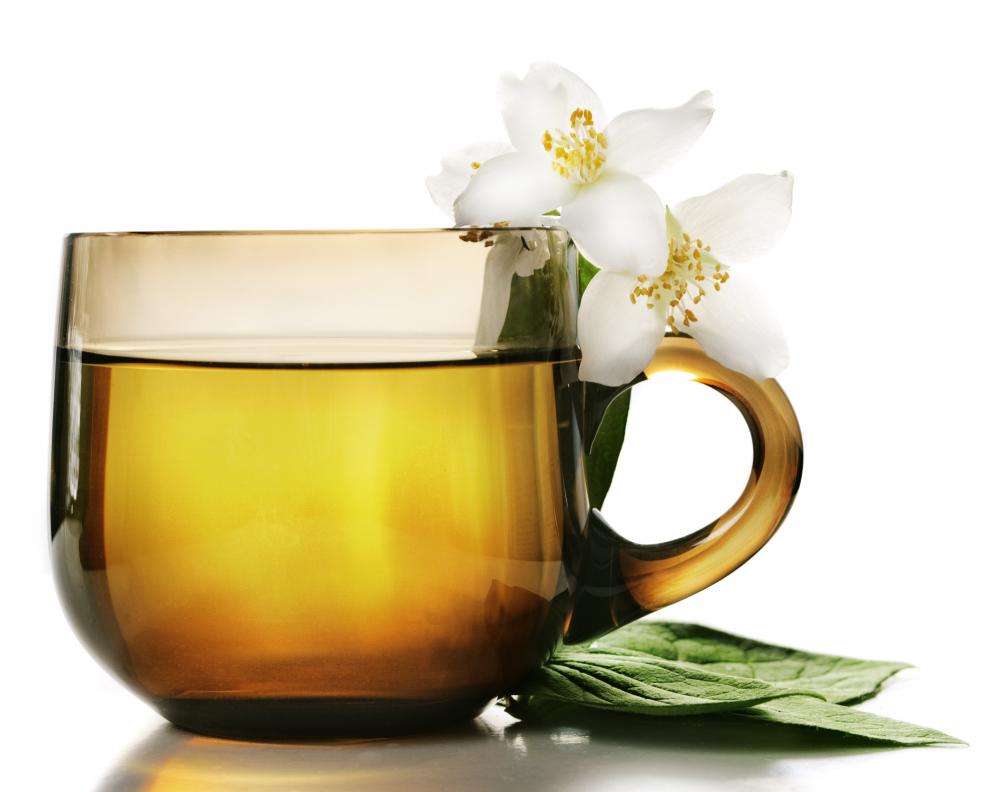At WiseGEEK, we're committed to delivering accurate, trustworthy information. Our expert-authored content is rigorously fact-checked and sourced from credible authorities. Discover how we uphold the highest standards in providing you with reliable knowledge.
What is an Herbal Infusion?
An herbal infusion is the result of steeping large amounts of plant material in boiling water. The steeping process can take from thirty minutes to many hours, depending on the type of plant material being used. Roots, barks, leaves, seeds, berries, and flowers can all be made into herbal infusions.
Herbal infusions are used to introduce the healing properties of specific herbs and plants to the body. They can also be used to make external applications, such as hair rinses, shampoos, infused oils, poultices, and other medicinal preparations. The herbs are combined with water and steeped, and then the plant material is strained from the liquid. The resulting infusion is either consumed or used externally. For medicinal purposes, consuming 2 – 4 cups (470 ml – 940 ml) per day is a general dosage.

Dried herbs are best suited for infusions because the minerals and nutrients contained within them are often more easily accessed. Although almost any part of the plant can be infused, the steeping time and amount of water used will vary. Seeds, berries, flowers, and leaves will need to steep for shorter periods of time than roots and barks. Because they are more delicate, it takes less time for their nutrients to be released into the water.

An herbal infusion made from roots and barks requires one pint (500 ml) of water per one ounce (30 grams) of dried plant material. The steeping time required is a minimum of eight hours. Allowing the mixture to infuse overnight in a lidded container is recommended.
Dried leaves are the most common plant material used for infusions. One ounce (30 grams) of plant material is combined with one quart (one liter) of water. The minimum steeping time for leaf infusions is four hours.

Flowers are also commonly used for herbal infusions. Although they lend themselves better to teas, infusions can be made for a stronger dose of the active ingredients. For one quart (one liter) of water, one ounce (30 grams) of dried flowers is used. Steeping time is a minimum of two hours.
Seeds and berries are the most delicate part of the plant, and they require the least amount of infusing time. One ounce (30 grams) of dried seeds and/or berries is steeped in one pint (500 ml) of water. The minimum steeping time for seed and berry infusions is 30 minutes.

A combination of herbs may be used together to make an herbal infusion, although they must be of the same type. Different types of leaves can be infused together but should not be infused with berries, for example. This is due to the different steeping times necessary to extract nutrients from the plant material. Steeping too long will result in a bitter infusion.

Pleasant tasting herbs, such as lemon balm or mint, are sometimes infused with bitter or otherwise unpleasant tasting herbs. Honey, sugar, or even salt can be added to an herbal infusion to improve the taste. Many people have a hard time becoming accustomed to the earthy taste, and use additives to make them more palatable.
AS FEATURED ON:
AS FEATURED ON:
















Discuss this Article
Post your comments